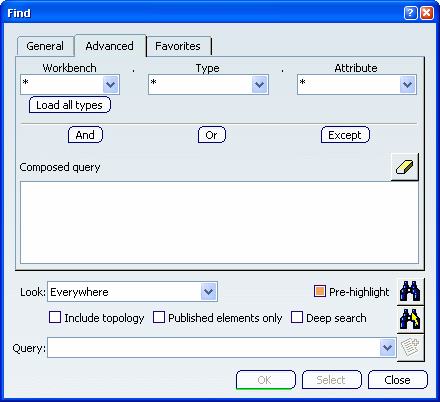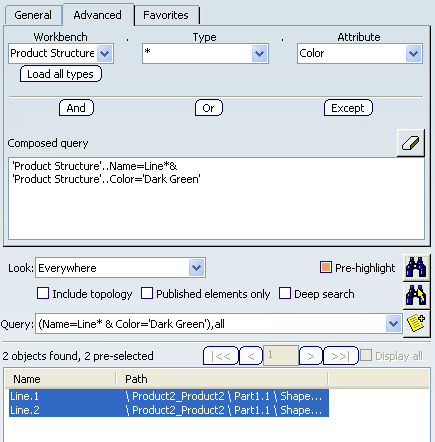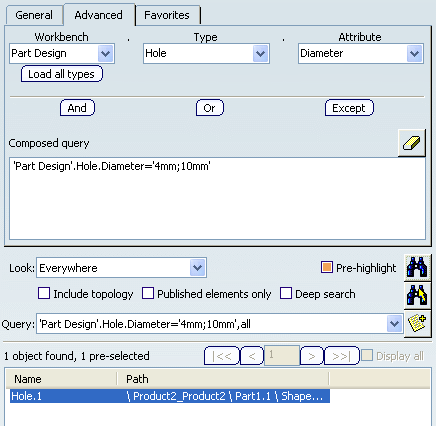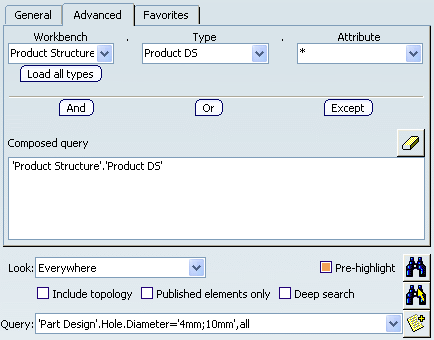You can search for specific attributes such as the color or the diameter of an object. You can also combine search criteria to run more complex queries.
Press Ctrl+F or select .
In the Find dialog box, click the
Advanced tab:

Select the workbench Product Structure.
Select an attribute from the
Attribute list.
If you are searching for a character string whose
value is empty, leave the box in the Attribute Criterion
dialog box empty so that the query syntax looks something like
this:
'workbench'.type.attribute=
where:
- workbench is the workbench in
which you are performing your search
- type is the type of the object containing the string you are
searching for
- attribute is the attribute containing the empty string.
For instance:
'Product Structure'.Product.Product Description=
Click OK then click the operating sign of your
choice (And, Or,
Except) to combine several search criteria and refine
your query.
Select the attribute Color from the
Attribute list then choose a color.
Click OK
then click the Find
 button to run the search (you can also click the Find and Select
button to run the search (you can also click the Find and Select
 button to run the search AND select automatically the objects that have
been found):
button to run the search AND select automatically the objects that have
been found):

When running a query with a color as search
criterion, you can either:
- Pick a color among the 16 colors available in the list.
- Pick a color among the 48 colors available by default in
the Basic Color area of the Color chooser (displayed
when you click More Colors... at the end of the list).
- Pick a color among the 16 custom colors available in the
Custom Colors area of the Color chooser.
- If this color is one of the 48 colors available by
default, enter directly its name in the Composed query
box.
Select a workbench then a type.
Select an attribute for the type then enter a value.
Depending on the attribute
you select, the Attribute Criterion dialog box may:
- Display a list of attributes.
- Let you choose a boolean attribute (e.g. TRUE or FALSE), if you are searching for a threaded hole, for instance.
Select an
operating sign in the list box, then enter a value (you can use the default value (*) as a wildcard).
For instance, select the =
operating sign and the value "4mm; 10mm" to search for any
element whose diameter is comprised between "4mm" and "10mm".
The number of operating signs displayed in the list depends on the
attribute you chose. Here is an exhaustive list of the available
operating signs:
- =
- != (different)
- <
- <=
- >
- >=
To modify the query, type a new query in the editor.
For instance:
'Part Design'.Sketch.name!=*2
or
'Part Design'.Sketch -
name=*2
means that you search for all sketches except those whose
names end with "2".
Another example:
'Part Design'.Hole.name=*1
& 'Part Design'.Hole.Diameter<50mm
means that you search for all holes whose names end with "1"
and whose diameters are lower than 50 mm.
Click OK to validate then click the Find
 button to run the search:
button to run the search:

Click OK to exit search mode.
![]()



